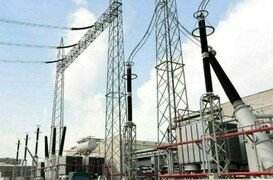Aptma Seeks Transparency on Electricity Tariff Constraints
The All Pakistan Textile Mills Association (Aptma) has urged the government to disclose the specific limitations preventing the removal of peak hour electricity tariffs for the industrial sector.
In a formal communication to Prime Minister Shehbaz Sharif, Aptma Secretary General Shahid Sattar conveyed that despite some headway, the current electricity tariff, ranging from 10 to 11 cents/kWh, is still not on par with the regionally competitive rate of 9 cents/kWh.
According to Sattar, competitor countries provide electricity at rates between 5 and 9 cents/kWh, thus putting Pakistan’s energy-intensive textile industry at a distinct disadvantage. The elevated cost of energy remains a key obstacle to export competitiveness and the expansion of manufacturing.
Call for Time of Use (ToU) Tariff Abolishment
Sattar stated that a further decrease in industrial power tariffs could be realized by getting rid of the Time of Use (ToU) electricity tariff structure for industrial consumers. He also specified that this action would be revenue-neutral because, according to Nepra data, industry is predicted to use around 32% more power during the peak hours that are now in place, which would more than make up for income losses brought on by the higher ToU tariff.
Aptma’s research indicates that this adjustment would lower the effective weighted average tariff for industrial consumers from Rs29.48/kWh (10.57 cents/kWh) to Rs28.36/kWh (10.16 cents/kWh), representing a Rs1.12/kWh decrease. Increased electricity usage would improve grid use and cut down on stranded capacity, which might result in a further Rs0.14/kWh drop in the average power purchase price. Through Quarterly Tariff Adjustments (QTA), consumers could benefit from this reduction.
Obsolete Mechanism
The Association stated that the ToU structure is an outdated mechanism that was implemented when Pakistan was experiencing severe power shortages and needed to discourage consumption during peak hours. However, with surplus generation capacity today and stranded capacity contributing to high tariffs, the continued application of ToU pricing is counterproductive.
Aptma stressed the necessity of swapping out the ToU structure for a consistent tariff at the off-peak rate in order to encourage maximum power usage, boost grid efficiency, lower per-unit costs, and improve industrial competitiveness.
The Association has urged the government to get rid of the ToU structure for industrial customers and put in place a uniform AS-II tariff that is based on the current off-peak rate.
In a recent exchange with the Power Division, Aptma mentioned that its team had met with senior officials to talk about the matter. During the meeting, Power Division representatives detailed the challenges involved in eliminating the peak-hour tariff, citing system limits, variations in demand, and the dynamics of fuel costs as important considerations.
The Power Division gave Aptma the assurance that the presented analysis, together with comprehensive information on real-time system demand and fuel costs, would be shared with the Association.
Aptma concluded that they look forward to receiving this information as soon as possible so that they can thoroughly analyze it and develop a viable plan to lower industrial energy costs while increasing demand on the national grid, which will ultimately promote broader economic growth.



Comments (0)
No comments yet. Be the first to comment!
Leave a Comment